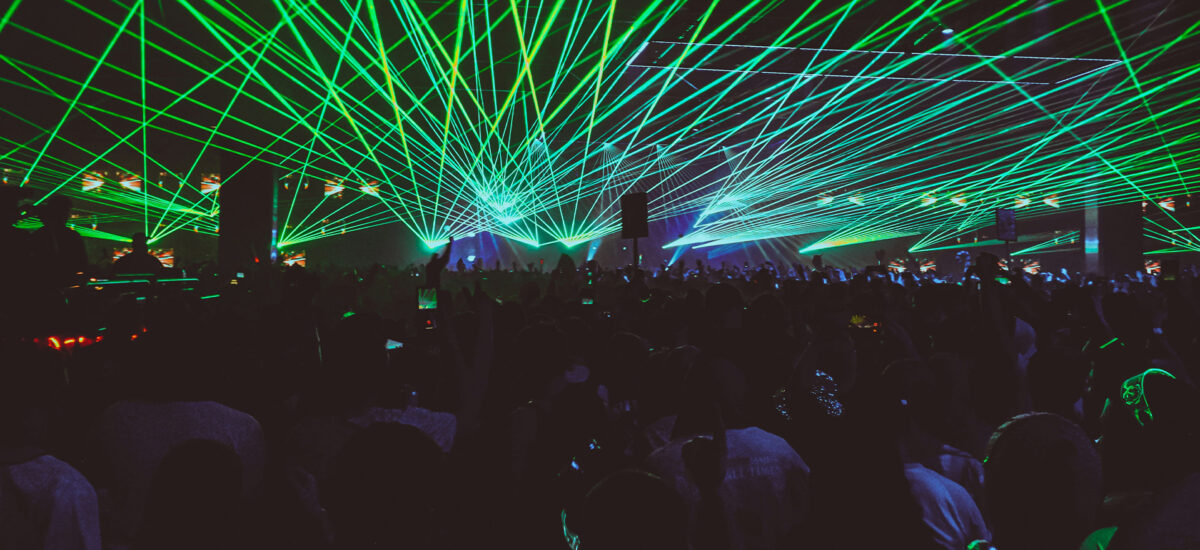
Welcome to the pulsating, vibrant world of electronic dance music (EDM). EDM producers create music that sets the dance floor ablaze. It’s a journey of endless creativity, where each beat, synth, and drop tells a story.
In this blog, we will explore the depths of what EDM music really is and share insights and experiences to guide you in creating your very own EDM tracks. Whether you’re just starting out or you’ve been mixing beats for years, these tips will offer valuable techniques from the world of EDM production that can help you produce a track that sounds like this:
Jump to these sections:
By the end of this piece, you’ll be well on your way to turning your ideas into reality and to start crafting tracks that resonate with EDM enthusiasts around the globe! But first, what is EDM exactly?
Follow along with Komplete 14, a powerful toolkit of instruments, sounds, and effects that can help you create professional-grade EDM music.
What is EDM music?
Electronic dance music is not just a genre – it’s a pulsating heartbeat that drives nightclubs, lights up festivals, and fuels some of the most unforgettable nights of our lives. It’s a canvas where electronic sounds paint vibrant sonic landscapes, designed to make the crowd move, feel, and live in the moment.
So, what is considered EDM music? EDM music is any piece of music created electronically with the power to transform a simple beat into a wave of collective energy. Even shorter: electronic music that makes you want to move.
In my own journey through the EDM scene, tracks like Avicii’s “Levels” and David Guetta’s “Titanium” have not only been sources of inspiration, but also benchmarks of what great EDM can sound like. These songs encapsulate the spirit of EDM because they’re more than just songs – they’re experiences.
Popular EDM genres
The true beauty of EDM lies in its diversity. The genre is an umbrella that shelters a range of sub-genres, each with its unique flair and audience. Here are just a few that I’ve dabbled in and admired:
- House: House music is characterized by repetitive 4/4 beats, rhythmic basslines, and synthesized melodies, originating in Chicago in the 1980s and evolving into various subgenres globally.
- Techno: Techno music originated in the 1980s in Detroit and is known for its synthesized sounds, and often futuristic or industrial aesthetic.
- Trance: Trance music involves hypnotic melodies and uplifting atmosphere, often featuring long build-ups and breakdowns, designed to induce a trance-like state in the listener.
- Dubstep: Dubstep includes heavy basslines, syncopated rhythms, and use of intricate sound design, originating in the UK garage scene.
- Drum and Bass: Drum and bass music has fast breakbeats, deep basslines, and intricate rhythms with dynamic tempo variations.
- Glitch hop: Glitch hop fuses hip hop rhythms and instrumentation with glitchy, stuttering sound effects and intricate production techniques.
- Synthwave: Synthwave is inspired by 1980s pop culture, with nostalgic and retro-futuristic sound, featuring synthesizer melodies, pulsating bass lines.
Each of these genres has taught me something new about the power of music and the art of production. If you wanna dive deeper into the magic of this “blanket genre”, I highly recommend exploring this article on electronic music.
How to make EDM music
Let’s break down the intricate process of creating EDM music into manageable, clear steps. It can be daunting to start crafting an EDM track, but with the right approach, it can also be incredibly fulfilling. Together, we’ll go through each phase of production, from the initial beat to the final master, ensuring you’re well-equipped to bring your musical vision to life.
1. Choose your genre
Choosing the right genre is crucial since each genre has a unique feel and rhythm. In this tutorial, I’ll be focusing on house music, a form beloved for its straightforward, catchy beats. But, even within the house music genre, there are sub-genres that range from progressive house to electro house to tropical house to acid house and beyond. If there’s a specific sub-genre you’re looking to produce, a quick search on the Native Instruments blog is sure to give you more specific instructions and guidelines to achieve the exact vibe you’re after.
2. Set the tempo and key
Setting the right tempo and key is one of the most foundational aspects of EDM production, and it’s a step that requires both technical understanding and creative intuition. In the realm of house music, which is known for its infectious energy and ability to get people moving, the tempo generally falls between 120 and 130 beats per minute (BPM). This range is the sweet spot that provides a rhythmic pulse perfect for dancing, yet leaves enough space for melodic and harmonic creativity.

Equally important is the selection of the key. The key of a track isn’t just a technical choice; it’s a decision that deeply influences the emotional tone and feel of your music. Whether it’s a euphoric major key for uplifting anthems or a somber minor key for deeper, introspective tracks, the choice of key can dramatically alter the listener’s experience, setting the stage for the story you want to tell through your music. To help you figure out which key will fit your song best, take a look at this article on EDM chord progressions and try them out for yourself!
3. Program the drums
The heart of any EDM track lies in its drum pattern – it’s what gets people moving and sets the tone for the entire piece. In my experience, crafting a compelling drum pattern in EDM music often starts with a solid kick drum, which acts as the backbone and provides a steady pulse throughout. For house music specifically, the kick typically follows a “four on the floor” pattern (meaning there’s a kick hitting on every beat). Take a look at the MIDI below.
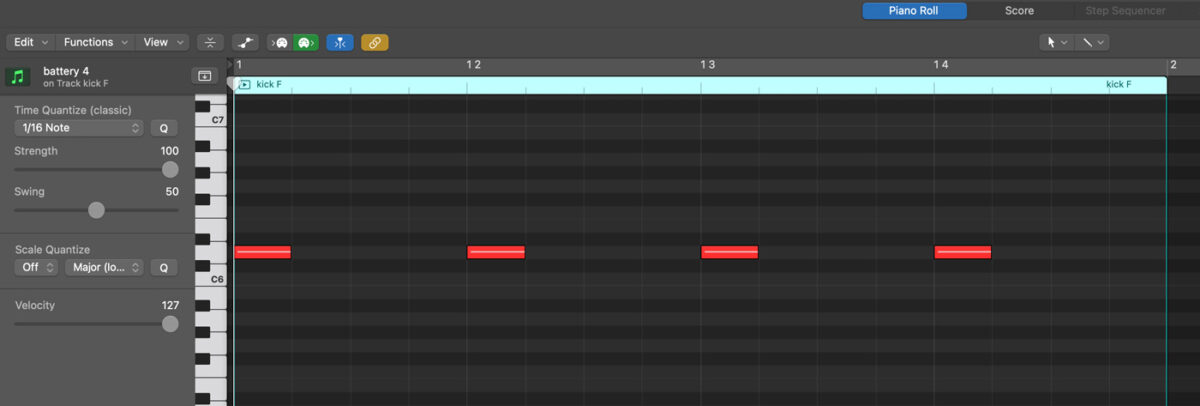
Now, to demonstrate what this kick pattern sounds like, I’ll run this MIDI through Battery 4 using a drum kit called “Molten Veil Kicks Kit” from the Molten Veil Expansion. If you’re just learning how to make EDM, Battery 4 is a must-have because it allows you to easily program drum loops and edit individual drum samples to create your own unique kits.
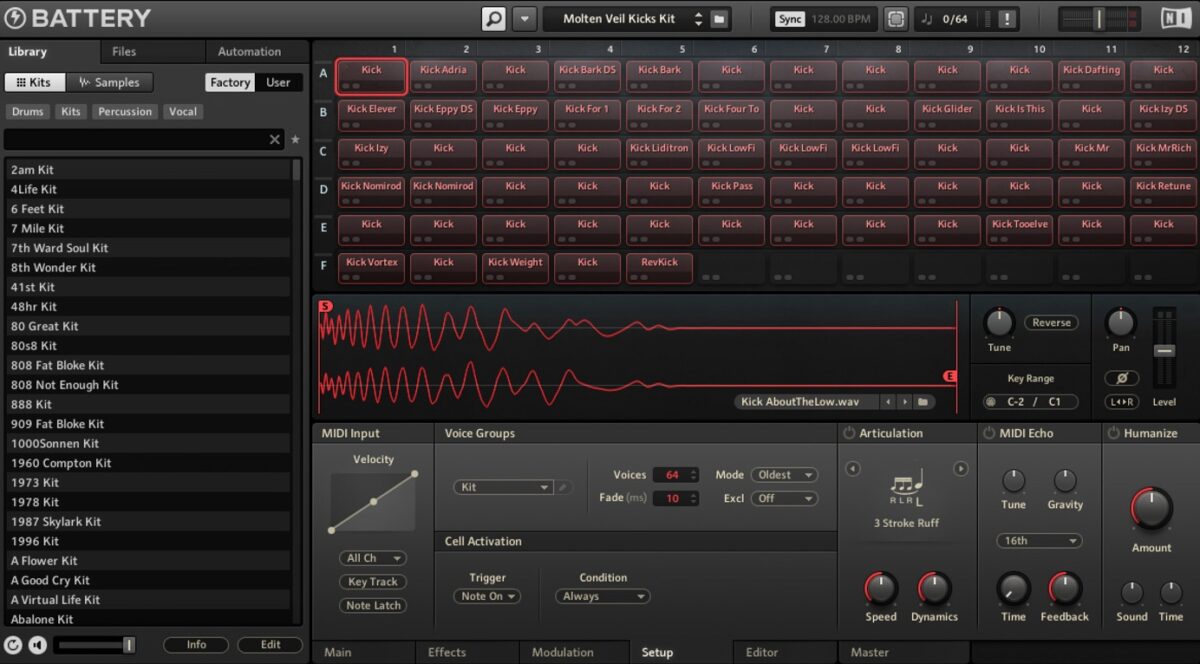
Now, listen to what this particular kick rhythm sounds like in action.
Layering in snares and hi-hats then adds texture and rhythm. The key is in the details. Slight variations in velocity and timing can breathe life into the beat, making it more dynamic and engaging. Using another kit from the Molten Veil Expansion called “Divide Kit,” I laid down this simple pattern to be played on top of the kick loop:

Remember, the drums are more than just a rhythm – they’re the foundation of your track’s energy.
4. Write a bass line
Now that we’ve got our drums in order, let’s beef up the low end with a catchy bass line. A good bass line should not only complement the drum pattern but also add its own character. When learning how to make EDM music, focusing on writing bass lines that are both rhythmically engaging and harmonically rich is the key to crafting catchy riffs that move the dance floor.
The interplay between the bass and drums is crucial in driving a track forward. Whether it’s a deep, pulsating bass for a club banger or a funky, melodic line for something more upbeat, the bass line is where I often find the track begins to truly take shape. My typical go-to bass synth for producing EDM is Massive X because it allows for nearly endless sound manipulation to make sure you’re getting exactly the bass sound you’re after.
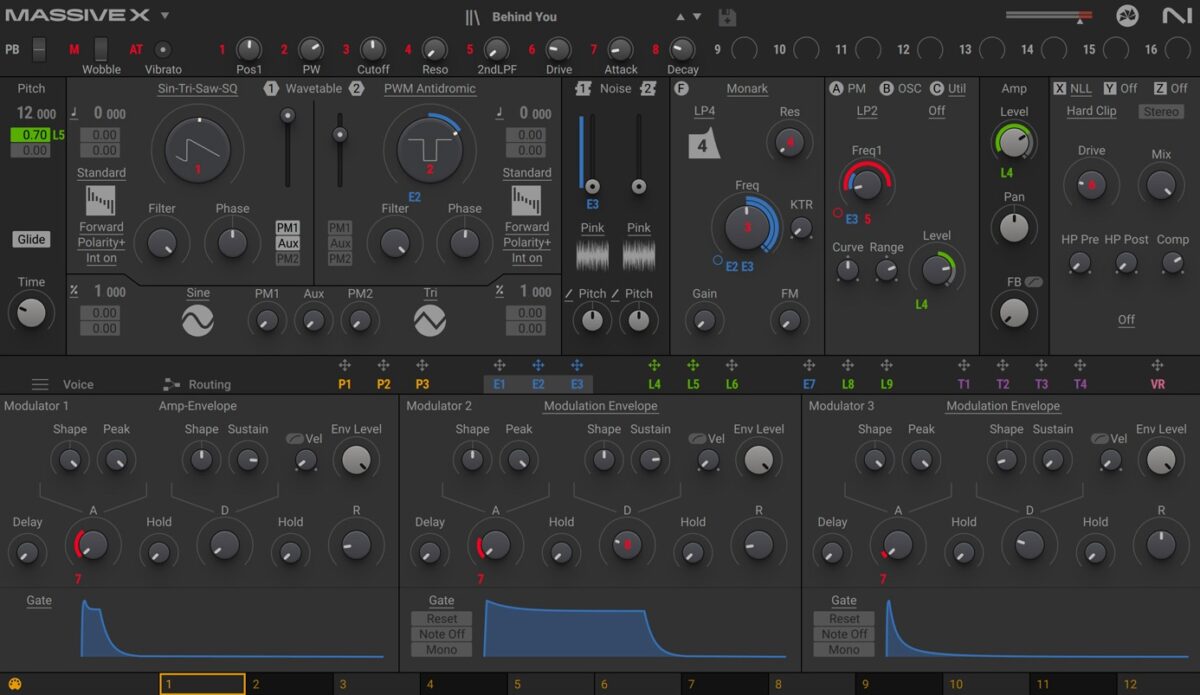
Plus, with tons of Massive X Expansions full of presets, you’re sure to find a great sound for your EDM bass – no matter which sub-genre you’re aiming to produce. For this example, I’ll be using a preset from the Our House Expansion called “Behind You.” First, take a look at the MIDI notes for my bass line.

And, finally, let’s play the bass line along with our drum loop from above so you can hear how they stack together to create a grooving house riff.
5. Add synths and melodic elements
The use of synthesizers in EDM is where I feel the most creative freedom. This is where you can truly shape the sonic personality of your track. Playing with different synth textures and layers is like painting with sound, where each stroke adds color and emotion. Techniques like hocketing (where a melody is divided among different synths) can create an intriguing, complex sound. Or, you could opt for a more minimal approach, with one synth stealing the spotlight.
For this demo, I’ll be taking the minimal route and using my favorite synthesizer, Massive, to throw in an extra synth sound on top of our house beat.

Using a Massive preset from the Lilac Glare Expansion called “Beep Me,” I programmed the synth riff seen below.

Now, take a listen to it in context with the rest of our beat.
Notice how even a minimal use of a synthesizer brought a new dimension to the beat? As you’re learning how to make EDM music, you can try implementing all sorts of different synth sounds into your EDM productions to give each track a unique flavor. Or, stick to using just the ones you like in order to craft your own signature style.
You may also want to add some melodic elements, especially using sample-based instruments like Kontakt 7. Even though EDM focuses primarily on electronic sounds, using sampled instruments can bring a fresh level of depth and richness to your tracks. If you’re just barely learning how to make EDM, definitely check out these free Kontakt instruments for electronic music – they’ll offer you a vast palette of sounds to explore.
6. Incorporate vocals
Vocals can transform a track from a mere collection of beats and melodies into a story that resonates with listeners. In my tracks, I’ve used everything from powerful, soulful vocal lines to extremely processed “vocal chops” to add a human touch. Vocals provide an emotional anchor, often becoming the memorable hook that listeners can’t get out of their heads. While not always necessary, when used effectively, vocals can elevate an EDM track to new heights.
For the demo track we’ve been piecing together in this article, I simply recorded a couple short vocal hooks and then processed them using Nectar 4.

Nectar 4 has some really neat features for processing and mixing vocals. For example, I used the Backer module to shift the formant of my voice down and then the Dimension module to make it nice and wide so it will sit nicely in my mix. Give it a listen with the rest of the track.
For more info on how to make EDM with vocals, feel free to check out these tutorials on mastering the art of vocal layering and ways to use free vocal samples in your music.
7. Add special effects and textures
In my productions, I use elements like risers, sweeps, and uplifters to create a sense of build-up and release, which is crucial for dynamic EDM tracks. Combining white noise, filters, and effects can help establish tension, enhance the mood, or dramatically shift the energy of the track. Experimenting with different textures adds complexity and can often lead to those magical moments in a track that you didn’t even know you were missing. Take a listen to this riser I created using the reverse reverb effect.
Now, give it a listen in the mix to hear it gradually build up tension toward the end of the riff.
The use of special effects and textures is like the secret spice in a gourmet dish – it can truly make all the difference.
8. Arrange and structure your track
Arranging and structuring an EDM track really is like telling a story – it needs to have a captivating beginning, a compelling middle, and a satisfying end. In my approach, I focus on building a journey for the listener, starting with an intro that sets the scene, leading up to build-ups and breakdowns that create tension and anticipation, and culminating in a climactic drop.
The drop is the moment of release, where all the energy you’ve built up explodes in a rush of sound and emotion. It’s a crucial part of the track, and getting it right can be the difference between a good track and a great one. For anyone looking to master this art, I recommend checking out these tips on crafting a powerful EDM drop.
Keep in mind, there’s no “one-size-fits-all” approach to arrangement, but just try moving around the various instruments in your mix and stacking them in different combinations until they tell the story that you want to tell. To give you some inspiration, take a listen to how I arranged the various parts of my track in order to craft a journey for listeners.
For further reading on this, check out this other article I wrote on how to create better transitions in your mixes.
9. Mix and master your track
The final steps of mixing and mastering are where a track truly comes together and shines. This is where technical skill and creative vision converge. Balancing the levels, EQing each element, and applying effects like compression and reverb are all part of the intricate mixing process (click those links to learn more about each type of processing).
During this phase, using reference tracks is crucial in ensuring your mix stands up to professional standards. But, with tools like Audiolens and Neutron, this step of the EDM production process has never been easier.
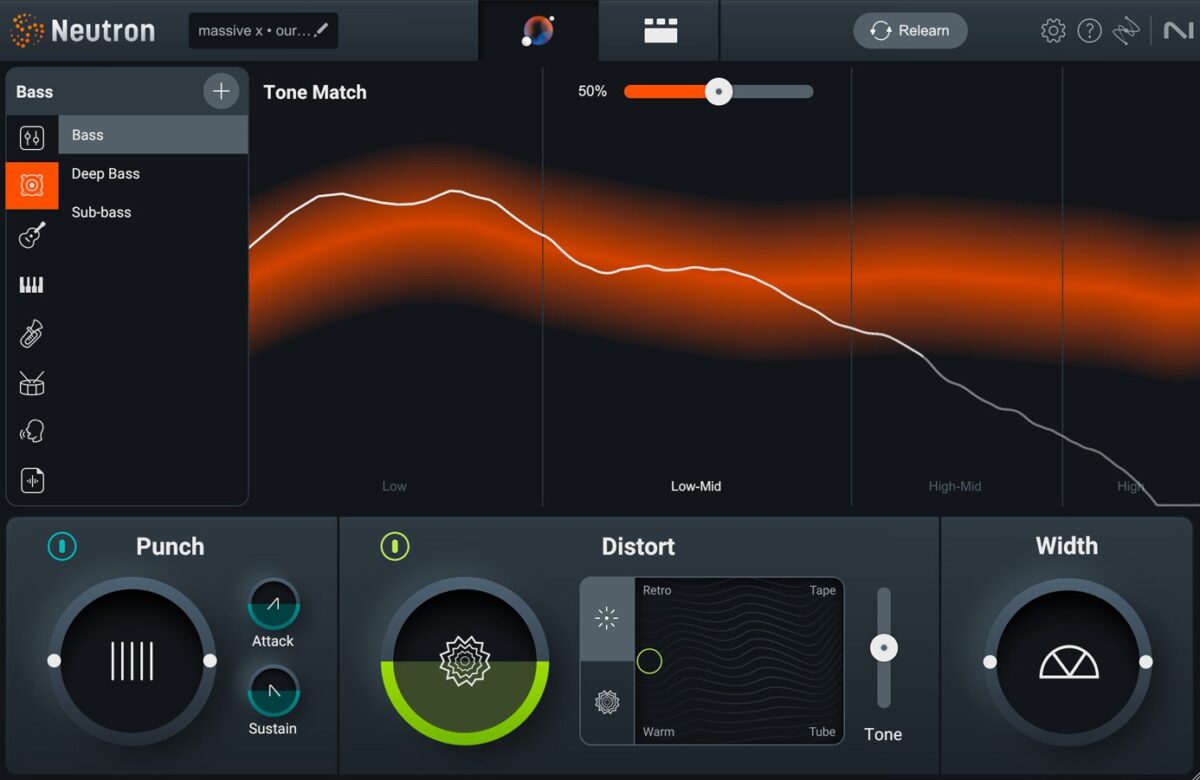
Once you’re happy with your final mix, you’ll want to master it to add that final polish and ensure your track sounds great on any sound system. I personally use Ozone for all my mastering needs because it has an AI-powered assistant that will intelligently listen to my tracks and do most of the heavy lifting for me.

To refine your mixing and mastering skills, definitely check out this article for tips on mixing EDM. But, remember, a well-mixed and mastered track can make all the difference in how your music is received. Below is the final master of my demo track – feel free to give it a spin!
Start making EDM music
I hope you’ve found a decent dose of inspiration (and practical knowledge) when it comes to EDM music. I’ve lived the “EDM producer life” for over a decade now and I can tell you: it’s one of constant learning and experimenting. There’s always something new to discover and master. But, just remember that every beat, synth, and drop is a piece of your creative expression and a chance to tell your unique story through music. So, show the world what you’ve got!
If you’re eager to take your EDM productions to the next level, check out Komplete 14. It’s packed with many of the software tools I’ve mentioned throughout this article, offering an extensive array of sounds and effects that are invaluable in the EDM production process.















